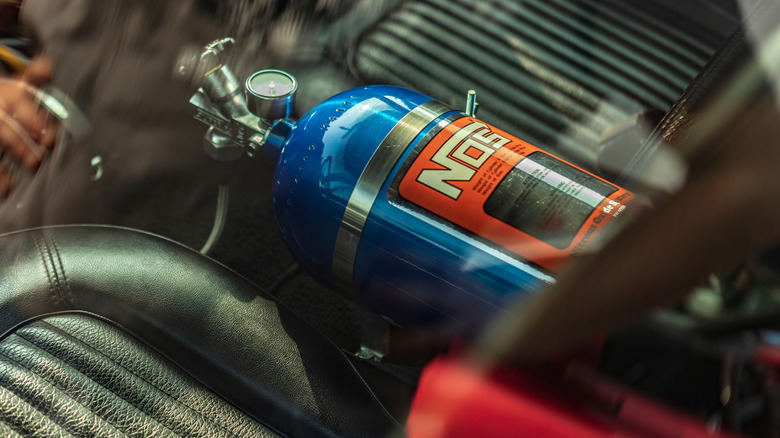
It's so annoying when you put your foot down and nothing happens. For something with turbo in the name, the turbocharger on your car does seem to make it a lot slower for a second or two. Why is your car cursed with this lag? Is there anything you can do about it?
Essentially, a turbocharger is a turbine fan that is spun by the exhaust your engine makes. As the exhaust makes its way through the pipe to eventually become smog, it first pushes against the turbine's blades, making it rotate. That rotation is connected via a shaft to an air compressor, which pressurizes air as it spins. That pressurized and compressed air is then shot into your engine cylinders. Since an engine's power comes from the combustion of gas and air lit by a spark plug, more air means that the cylinder can also take more fuel, leading to a bigger combustion and, thus, more power.
That's why turbochargers allow an engine to be both powerful and fuel efficient at the same time, which in turn is why turbo engines are getting so common these days. However, the Achilles heel is right there at the start of the process — the turbo's turbine needs exhaust to spin. So when your car is coasting or idling and making comparatively little exhaust, the turbine slows down. Once you put your foot down, it takes a second to build up enough exhaust pressure to get it spooled again.
 Filippo Carlot/Shutterstock
Filippo Carlot/Shutterstock
There's not much you can do about turbo lag from the driver's seat, it's just part of the nature of how turbos work. Back in the garage, however, if you'd like to roll up your sleeves and install some mods, there are a variety of more elaborate turbos intended to reduce lag.
You might also try swapping in a smaller exhaust housing, but this won't zero out the issue completely. Technically, there are some pretty wild — and fiery — anti-lag systems out there that will keep turbos spun by causing ignitions in the exhaust path itself, but since these are basically rolling fire hazards, they're mostly illegal.
Nitrous oxide is a pretty good way to spool up a turbo near instantly, since it causes pressure to spike throughout the system. As you know, however, that can cause significant problems and damage if you haven't tuned your engine exactly right. There still will be some lag even in this instance.
These days, however, car manufacturers have some pretty amazing solutions for turbo lag that involve completely engineering their way around the problem. Hybrid cars, of course, have two distinct ways to get your wheels turning, the gas engine and the electric battery. Electric gets you pretty much instant torque and acceleration, so the car can just use that while the engine and turbo are getting up to power. The turbocharger itself is still lagging, it's just that your car is using the battery instead while that's happening.
A few carmakers, meanwhile, have recently gone the extra mile and installed a very tiny electric motor specifically for the turbo's turbine itself! Available on some Mercedes and Porsche models, this little motor gets the turbo moving quickly, even before the exhaust from the engine gets it fully spun. Even with this wizardry, however, a Porsche 911 Carrera GTS is only reducing lag by a factor of three. One way or another, if there's a turbo, there's going to be lag.
















Facebook Conversations